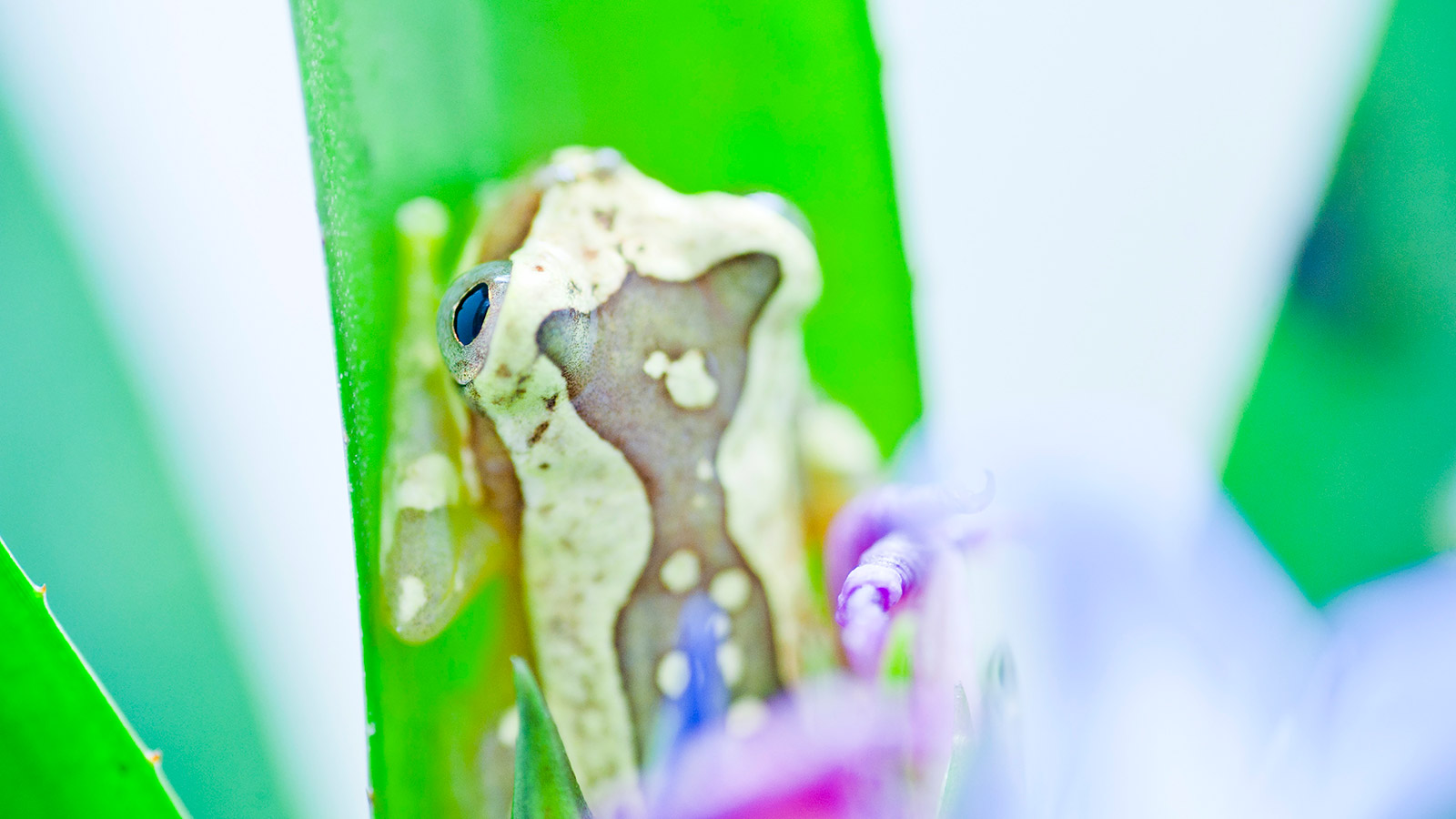How do tadpoles from the same family avoid potential predators by growing different tails, and how do their parents choose to mate? Two Vassar students, under the auspices of Vassar’s Undergraduate Research Summer Institute (URSI), are working this summer with Assistant Profs. of Biology Justin Touchon and Megan Gall, attempting to answer those questions.
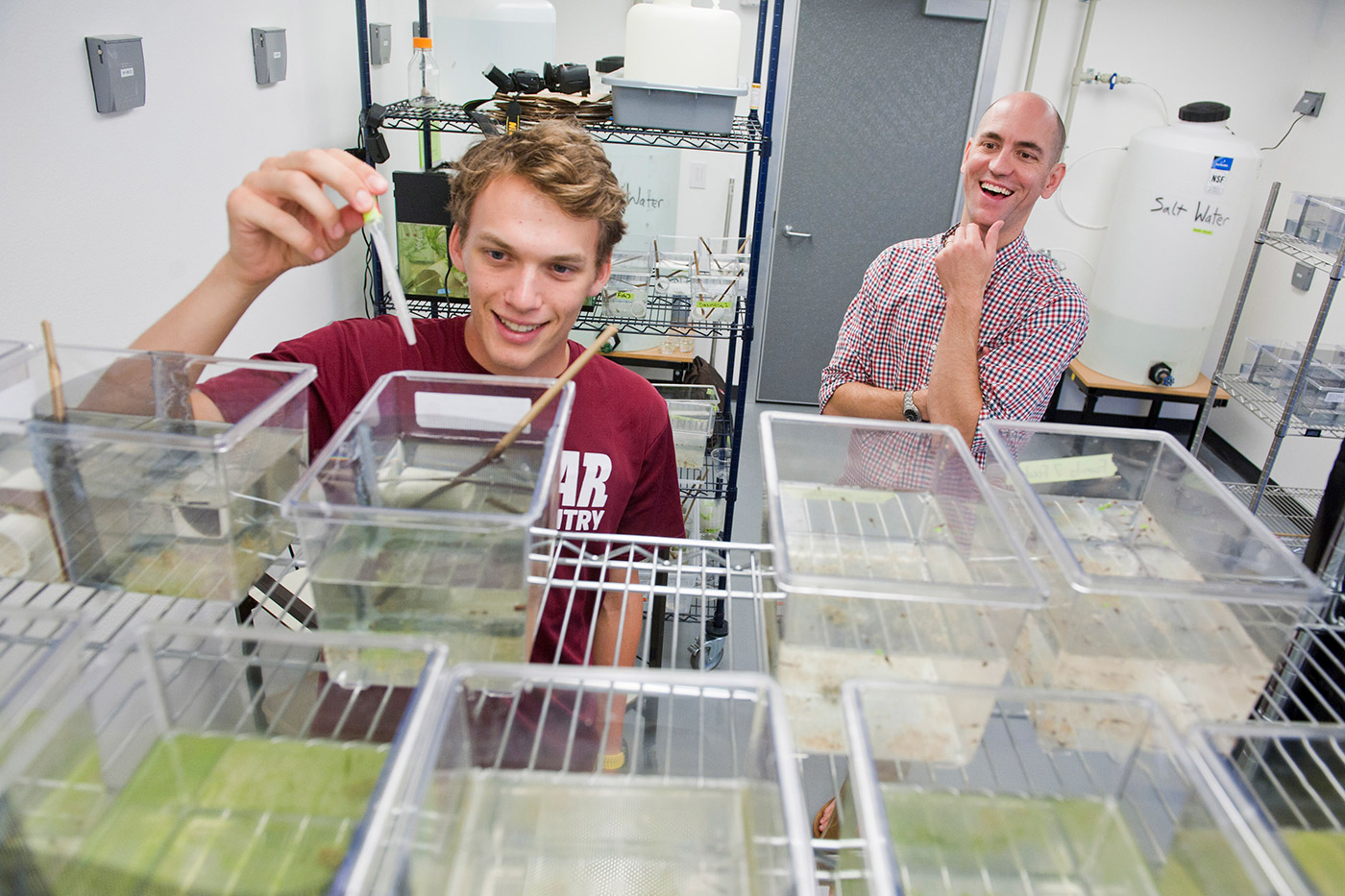
Jared Freedman ’18, a biology major from Newton, MA, is studying groups of tadpoles swimming in tanks in a lab in Vassar’s Olmsted Hall. The tadpoles in one tank have sleek, transparent tails built for speed. Those in the adjacent tank have grown bulbous, red tails that help them make quick, sharp turns. At first glace, you’d think they were different species, but they’re actually progeny of the same parents, tiny hourglass tree frogs that Touchon collected last summer from the rain forests of Panama.
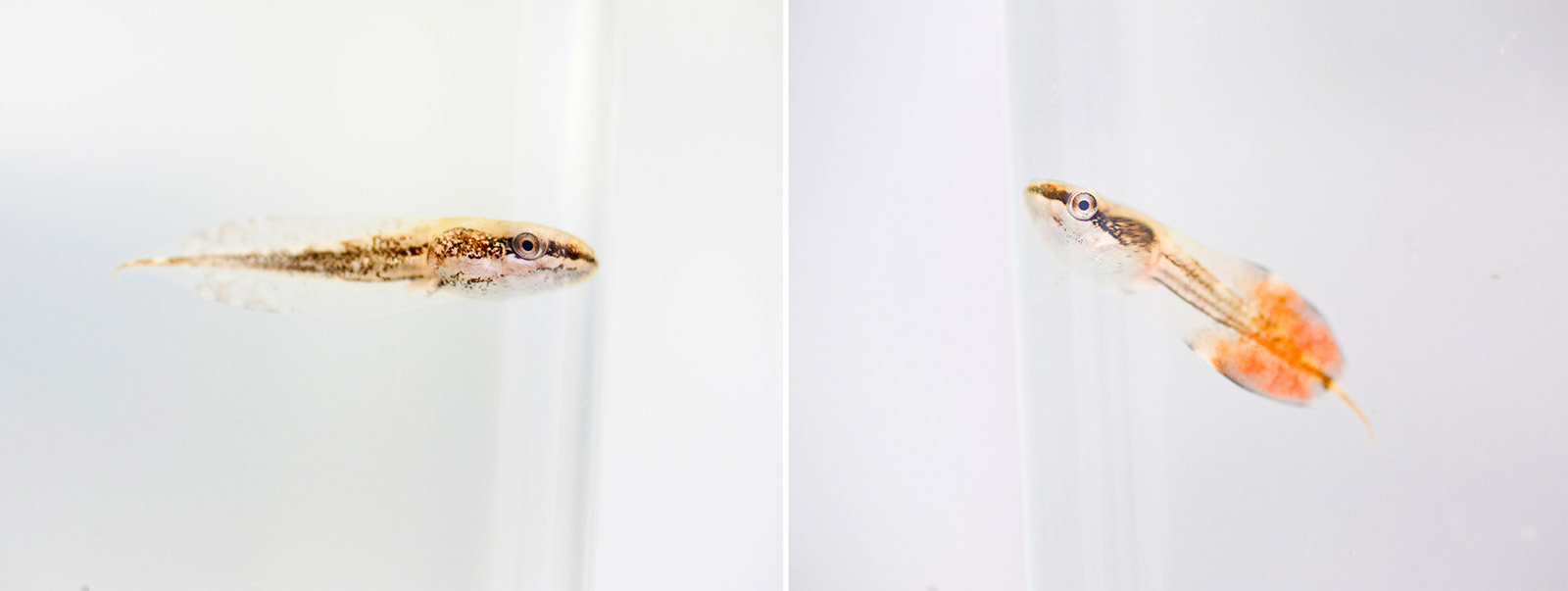
Touchon says scientists have determined why these tadpoles grow markedly different tails. Those that live in water inhabited by fish can best avoid being eaten by using their sleek tails to swim away quickly. Those threatened by one of their deadliest predators, the dragonfly larvae, grow larger, red tails that serve two purposes, Touchon says. The size of the tail makes it easier for the tadpoles to make quick, sharp turns to help them avoid the deadly strike of the larvae. And because the tail resembles the tadpole’s head, it’s more likely that the larvae will strike at the tail instead of the head, enabling the tadpole to escape. “This was discovered kind of by accident by some scientists in Panama in the 1980s,” Touchon says. “So we know the ‘why.’ What we don’t know is the ‘how.’”
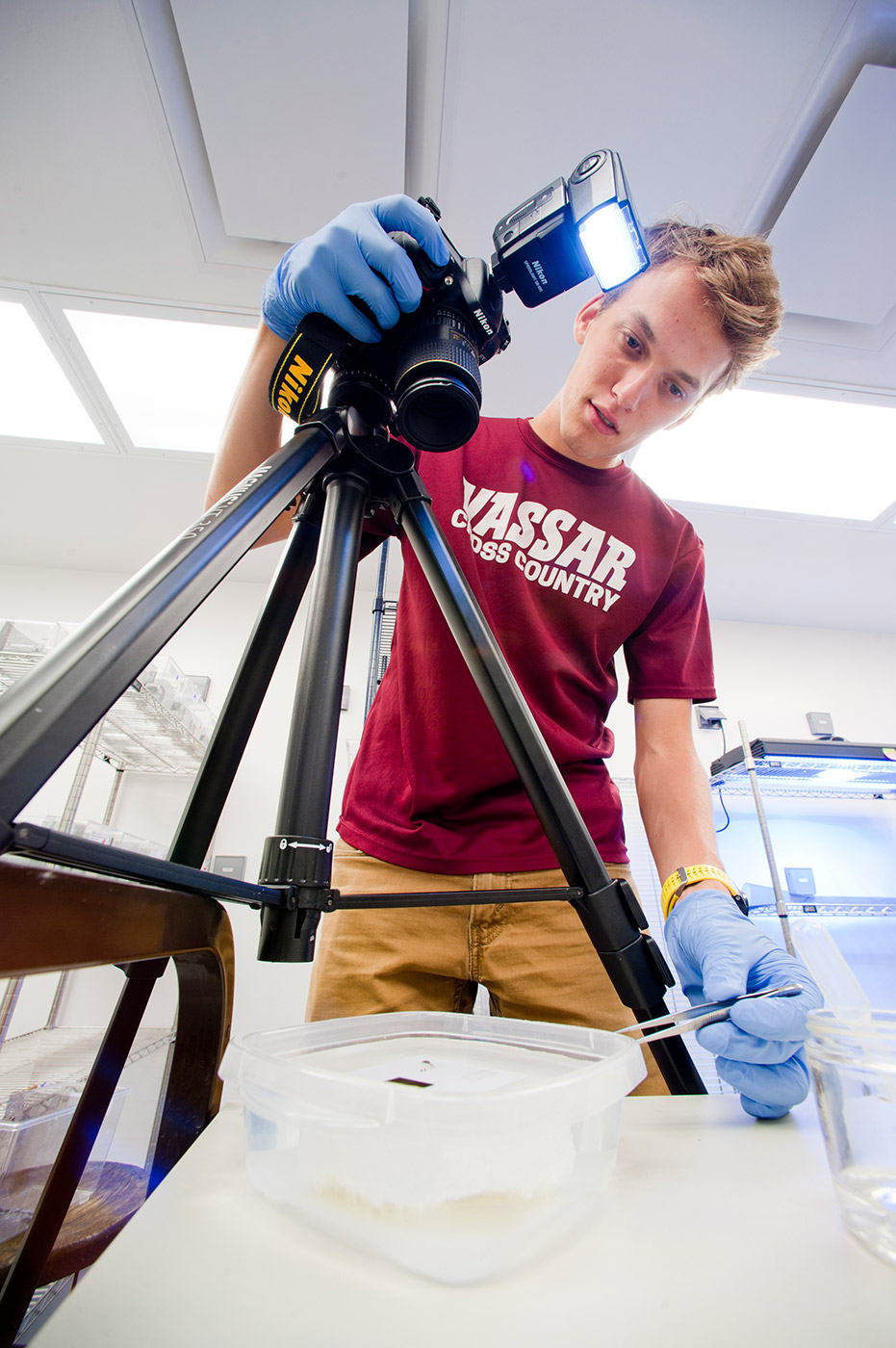
To find how the tadpoles accomplish this genetic trick, Touchon and Freedman are conducting genetic research. They are analyzing the frogs’ genes as expressed through their ribonucleic acid (RNA), which plays a role in their genetic coding. Freedman says the RNA analysis won’t be completed this summer, but he plans to continue to work with Touchon during the school year.
Freedman says he’s excited to be taking part in such cutting-edge research. “It’s cool,” he says, “learning stuff nobody else knows, to be part of something bigger than going to class and learning about what’s already known. Doing this research, I might ask Prof. Touchon a question and he’ll say, ‘You know, I really don’t know; let’s find out.’”
Freedman says his URSI experience has given him a jump on skills he knows he’ll need when he launches his post-Vassar education. “URSI is much different from going to class,” he says. “I’m coming into work every day and developing skills I didn’t have before. You take a lot of pride in your work; you’re invested in how you complete your tasks.”
Meanwhile, in the basement of Olmsted, three floors below the lab where Freedman is working, Kiki Walker ’19, a biology major from Atlanta, GA, is recording the male frogs’ mating calls in hopes of learning how females choose a partner.

One of Walker’s first tasks this summer was recording mating calls of more than a dozen males. Then she built a platform with speakers on each side and an apparatus to attach an overhead video camera above the center of the platform. Walker, Touchon and Gall are observing the female frog’s behavior when she is placed in the center of the platform and hears mating calls of two different males, one emanating from each speaker.
If the female “chooses” one of the males by hopping toward one speaker, she is placed in another tank containing the two males whose mating calls she heard on the speakers. Touchon, Gall and Walker then observe whether the female chooses the same male whose voice she chose when she heard it over the speakers. If the female chooses the other male, that may be an indication that she considers factors other than the sound of the mating call when she chooses a mate, Touchon explains.
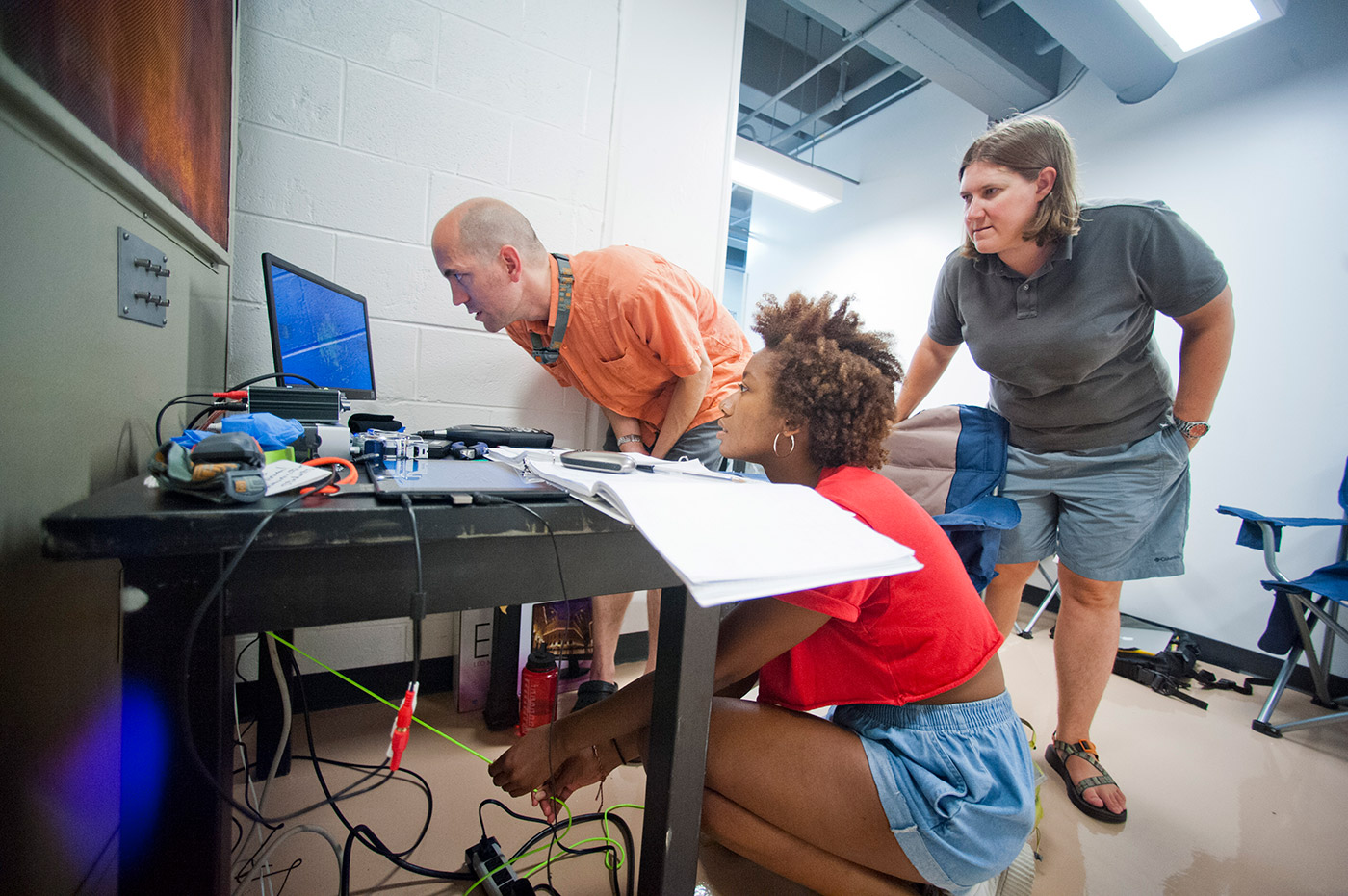
Like the RNA analysis of the tadpoles, this study of the mating calls has never been conducted before, and the results of the research have been inconclusive so far. “Being a typical Vassar student, I wanted everything to work perfectly all the time,” Walker quips, “but that’s not how science works at all. You have to accept that sometimes you’re going to fail and just keep trying.”
Tocuhon says he’s impressed with Walker’s work. “Everything we did for this project was from scratch—Kiki built everything—and it’s part of the process,” he says. “Figuring out the best way to actually conduct the experiment requires a bit of trial and error.”
Walker, who plans to pursue a career as a marine biologist, calls her URSI experience, invaluable. “It’s been nerve-wracking at times doing these experiments after weeks of prep work,” she says, “but it’s definitely reinforced my goals for my career to be doing this work this summer.”
